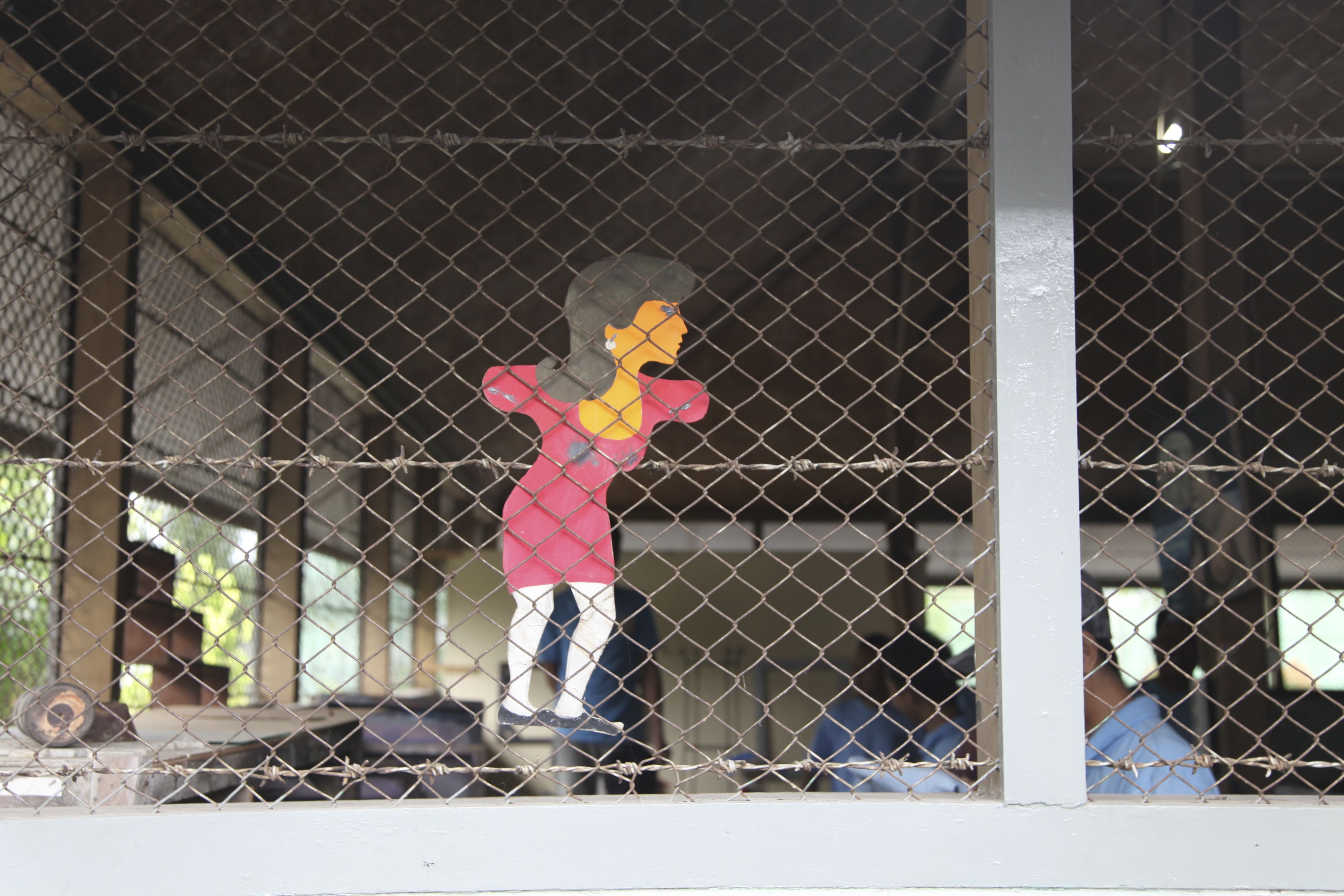by NIKKI EDWARDS
 A stencil of a woman adorns the men’s workshop at Wirogunan prison, reminding inmates of the outside world PHOTO/Nikki Edwards
A stencil of a woman adorns the men’s workshop at Wirogunan prison, reminding inmates of the outside world PHOTO/Nikki Edwards
An examination of prisons and detention centres shows that Indonesia still has a long way to go in protecting human rights
The international media has long carried stories about the imprisonment of Schapelle Corby in Bali and of the Indonesian children convicted of people smuggling and held in Australian gaols. But until the recent riot in Tanjung Gusta prison, where inmates were being held in facilities stretched to almost double capacity, the stories of the thousands of Indonesians who are locally imprisoned failed to make the headlines. This edition of Inside Indonesia begins to investigate these people’s stories. The articles delve into the depths of Indonesia’s gaols, seeking to understand who is incarcerated, under what conditions, and why.
Many argue that gaols are an integral part of the criminal justice process, and that imprisoning those who have committed serious crimes is a vital element not only of retribution but of rehabilitation. But imprisonment can also betray a state’s most inhumane behaviour. Those who are imprisoned become vulnerable, no longer able to clothe, house, or feed themselves. The state is responsible for the protection of these individuals’ rights, yet prison conditions are often subject to only limited monitoring.
At the same time, the act of imprisonment itself can be highly contentious, for example, in cases involving political criminals or refugees. Regardless of the conditions in which such inmates are kept, their very incarceration is antithetical to human rights norms. On this indicator, Indonesian prisons have improved dramatically since the New Order, when the detention of political prisoners was common. But, as the articles in this edition show, Indonesia still has a long way to go before its gaols can be described as respecting human rights.
Overcrowded and corrupt
The inhabitants of Indonesia’s gaols are primarily convicted criminals. These people often come from the most marginalised parts of society. Once incarcerated, in a country where the social services budget is never enough go around, it is all too easy for those in gaol to bear the brunt of inadequate funding. Leopold Sudaryono sets the scene, writing about Indonesia’s overflowing prisons and the failure of government reform initiatives to improve the situation. His article calls for radical reform, contending that conditions are almost unbearable. Tim Mann’s article, by contrast, shows how the situation is not so bad for everyone. In an article which weaves in stories of the rich and famous, Mann contends that those with wealth often get off lightly, thus bringing into question the retributive function of prison.
Not all the stories about imprisonment of criminals included here are negative. Julie Chernov Hwang presents a close study of the disengagement of a Posonese jihadi while in prison. She argues that prison time can provide the space to disengage from terrorist ideology, although incarceration is just one of many possible factors that contribute to disengagement. Josh Stenberg and Ad Akbar finish this first cluster of articles on an even brighter note, describing a prisoner-organised theatre performance in a Bandung gaol. Their piece outlines how Indonesian’s love of singing and performance is able to find expression even in gaol, where having a creative outlet helps prisoners manage their emotions during their incarceration and reintegrate into society upon release.
Inside Indonesia for more
